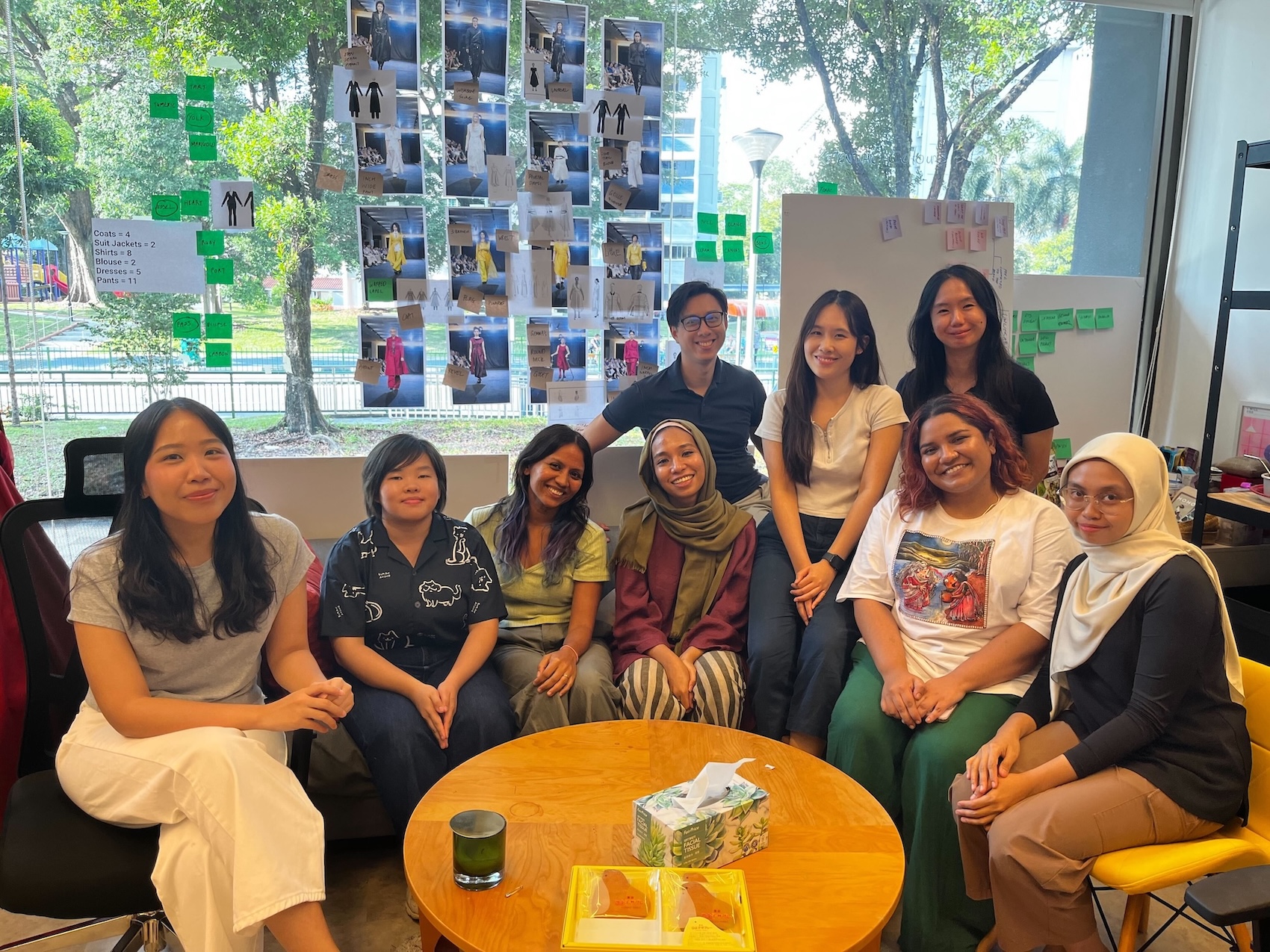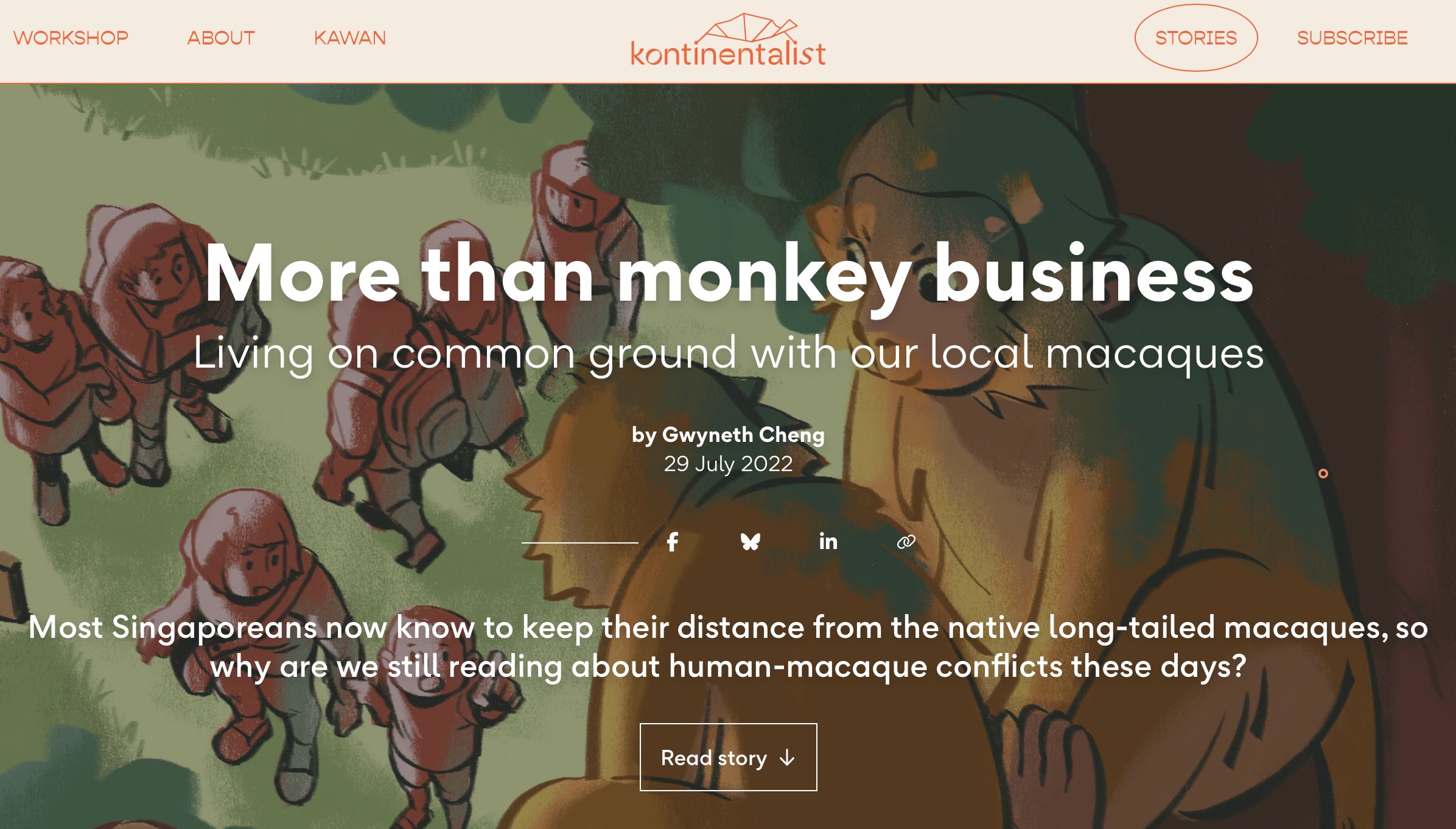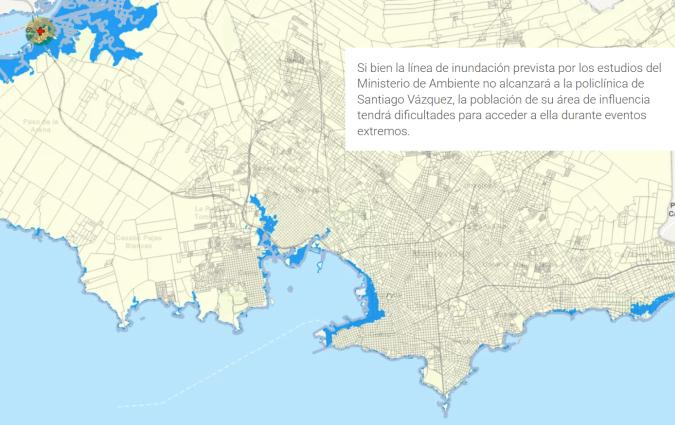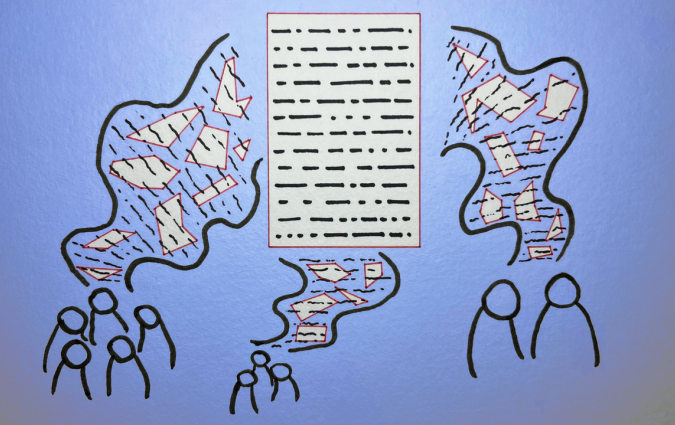Charting myths, debt and monkey farms: How Kontinentalist is reimagining data journalism in Asia

The Kontinentalist's team. | Courtesy of The Kontinentalist
An original storytelling startup is giving visual data journalism a distinctly Asian flavour. Singapore-based Kontinentalist began with an initial assignment to report on the impact of China’s Belt and Road Initiative across Asia, but has since gone on to feature corruption in Cambodian monkey farms, foreign direct investments in debt-riddled Laos, and even myths and monsters from across Asia – all with an interactive, immersive, vibrant design.
Kontinentalist is very different from traditional newsrooms. Its storytelling style is a conscious turn toward slow journalism in a fast-paced world. The average piece can take two to three months of production. Long-form deep dives, like a collaboration with Visualising Palestine called Gaza Lives, can take up to a year to produce. Every story goes through a collaborative design sprint, a team effort in a company staffed by just over a dozen people.
“We care more about long term return – whether or not a piece is still relevant four, five years down the road,” said co-founder Pei Ying Loh, who stressed the company looks at qualitative impact over ad revenue and arbitrary readership figures: “The metrics we do care about is: if people do read it, what do they do about it?”
Kontinentalist’s business model includes a studio and consultancy, subscriptions, and workshops – which in turn fuels journalistic projects. It is also developing Lapis, a no-coding tool that allows users to layer and visualise data and text. Lapis is in its alpha stage, available to those who sign up on a waitlist, with a beta version coming soon. The tool is supported in part by a Google grant, but also by its parent company, Potato Productions, a collective of social enterprises spanning industries from fashion to publishing. Founded by former journalist, businessman and philanthropist Lee Han Shih, the company provides administrative oversight for Kontinentalist but is not involved in its editorial output.

I spoke to co-founder Pei Ying Loh about their approach to visual data, the importance of tools by and for Asians, and its role in the region’s dynamic media ecosystem. This conversation has been edited for clarity and length.
Q. One of the things that grabs a viewer’s attention about Kontinentalist is the immersiveness of its design. What’s your philosophy?
A. We have an excellent design team and lead, who are really behind the beautiful and wonderful visuals you see. Here are some of the ideas underscoring our work: in terms of the aesthetic, we design it to be vibrant, beautiful, and more Gen Z-focused. Key principles are inclusivity, celebration of diversity, an acknowledgment of regional flavours and tastes. We use a lot of local design motifs and colours.
We also have very clear design principles around how we communicate cultural difference and diversity. We avoid pigeonholing or reinforcing stereotypes, especially Eurocentric ones. We will not intentionally use the color red just for China, for example. We avoid using stereotypical images to associate China with dragons or pandas. Everything is very intentional for every story we put out.

Q. How do you sustain your operations?
A. We are different from most newsrooms in that we do not do sponsored content. We do not do advertising. Those were also intentional decisions because we realised the impact it has on news. We want people to be able to trust the work we put out.
Obviously, at some point we have to feed ourselves and keep the books balanced... One part of this is that we function as a studio. We have a similar set-up to data journalism site The Pudding. We have another arm we call Kontinentalist Studio, where we perform similar services to clients who need data visualisation or data storytelling work. We have also diversified our offerings. We now teach data storytelling workshops to people from all walks of life, but mostly to policymakers, people who work in communications in nonprofits and data scientists. We are in the process of developing a tool called Lapis that is meant to be a content management system that makes it easy for people to practice some form of data storytelling on their own.
In reality, we do many other things: workshops, community events. We are also trying to run a membership programme called Kawan. Lapis has received a substantial amount of our investment. We have Google Innovation Challenge support, but it’s mostly at the moment funded by our parent group.
We want to be less locked in on the publication-focused mode of operation and to diversify our opportunities for client work and collaboration. This can take on the form of an art exhibition, an event, a data project, or we can also work with organisations to support them in their data collection processes. We have received a lot of requests from activists to try and support them in how they collect their data. In Southeast Asia data can be quite scarce, and it’s often controlled by people in power.
Q. Tell us more about Lapis. How could journalists use it? And where you plan to take the tool.
A. Lapis started as an answer to our own pain points. We recognised that the barrier to data storytelling is quite high. Lapis’ design makes data storytelling not just easy in terms of pulling together the technical components of the story (data visualisation, textual elements) but it’s also a collaborative tool for newsrooms. Instead of having to manage previous versions in all sorts of word documents, Lapis is meant to be a version control tool.
You can collaborate with your team all at the same time. If a designer changes one element of the story, you don’t need to rehaul your entire piece of work. That’s sort of the pain point with a lot of these beautiful visual essays… If anyone decides to change something, you have to re-upload the entire heavy, clunky file. The developer has to go in to manually hunt down the specific word and remove it. Lapis has removed a lot of these challenges.
Q. Journalists in Asia tend to rely on tools from international and western organisations. How important is it to have these resources coming out from within Asia as well?
A. It’s very important. When we were trying to build Lapis, we did our homework. We’ve done focus groups in Southeast Asia with journalists and I remember one of them recounting that his company’s workflow was one giant WhatsApp chat. There is a lot of fluidity in terms of just using whatever tools are available, the cheapest price and the easiest access point possible. There is often very little structure.
A lot of people choose to be independent rather than plugged into an organisation because it gives them the freedom to work on as many projects as possible and hold a more independent voice. So it is a completely different landscape and it’s very important that there is a tool that represents that [fluidity].
When we speak to practitioners, they don’t have the luxury of time to analyse a dataset of a hundred thousand rows on their own, or hire a designer to beautify some of their products. They are working on a really tight timeline and they would like to just get an important data story out. So we also keep that in mind when designing the tool to remove as many of these barriers as possible.
Representation [of tools by and for Asians] is also important in terms of the tool landscape. [Tools are] mostly by American or European companies. Price-point wise, we want to provide something different.
Q. Kontinentalist’s coverage of Asia seems to align with the emerging status of Singapore as a regional hub for media and culture. How is it operating a business there?
A. One of the benefits is that Singapore is a safe environment in terms of day-to-day living arrangements. There are structural advantages in terms of the systems that are in place that make it easy to operate a company... Operating from a place where English is the main language also makes it easy for us to branch out of Singapore to a different audience.
But there are also downsides in terms of legislation that’s been written specifically governing media landscapes. In the last few years, we’ve seen the Protection from Online Falsehoods and Manipulation Act (POFMA) and the Foreign Interference (FICA). Both pieces of legislation have limited us in different ways and force us to be very careful in what stories we pick and talk about.
These laws limit the resources that are available to us — so we can’t necessarily apply for a foreign grant to talk about a specific topic that the state might find sensitive, or something that might threaten national security. It’s top of mind when we decide [if this is] something we should talk about and how to do so legally, safely, and responsibly. We know of many individuals in Singapore who have been affected by these pieces of legislation. It does create a climate that isn’t maybe the most conducive for open communications.
That said, being in Singapore has also allowed us to be able to lend our voice to our regional partners. So we have published stories that can’t be published elsewhere. We’ve told stories about Pakistan, Myanmar, and even about Hong Kong.
Q. Where do you see data journalism as a practice going in Asia?
A. There’s this perception that data journalism is a new field, but it’s been around for a very long time. Being data-driven forces you to check your stereotypes or your own biases. You would need to compare your data, to ask if this is something really out of the norm, or is this something happening at an alarming rate.
On the flip side, the reverse is also true – if you get a dataset and have an analysis, it’s very important to still sense-check that with lived experiences. Data operates with a lot of persuasion and believability, and it’s a double-edged sword. It can be extremely persuasive, but it can also be very dangerous. You have to persuade, but you also have to be very careful to make sure that it is in touch with people’s realities.
In Southeast Asia [there is a growing] wide and broad middle class. Income inequality is quite high but people are getting more informed. Social media has led to quite a bit of that, and I do think that with increased literacy, also data literacy, there will be a hunger for more such content. People will not be satisfied with just qualitative pieces, but they would like to know how data can affect key things — not necessarily just economics but also cultural affairs. As that base grows, so will data journalism.
In every email we send you'll find original reporting, evidence-based insights, online seminars and readings curated from 100s of sources - all in 5 minutes.
- Twice a week
- More than 20,000 people receive it
- Unsubscribe any time
signup block
In every email we send you'll find original reporting, evidence-based insights, online seminars and readings curated from 100s of sources - all in 5 minutes.
- Twice a week
- More than 20,000 people receive it
- Unsubscribe any time







